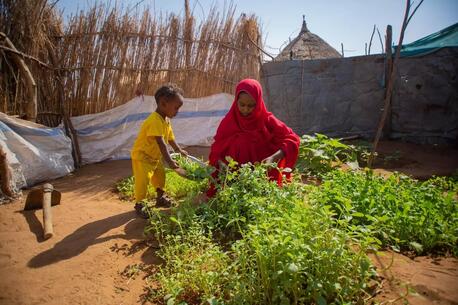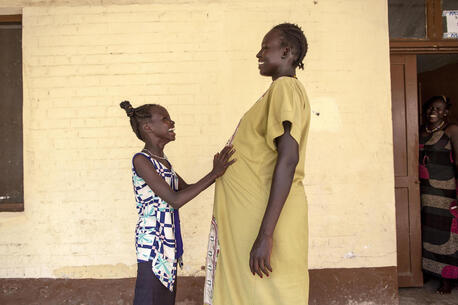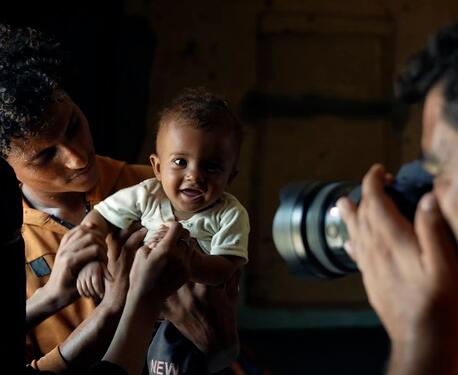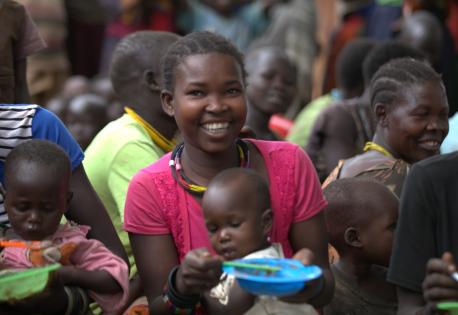
Mothers, Community Volunteers First Line of Defense Against Child Malnutrition
UNICEF prioritizes the role of mothers, caregivers and community volunteers in ensuring that children are eating a well-balanced diet of nutritious foods. A look at this approach in action in Uganda.
Darla Silva, UNICEF USA's Chief Program Officer, recently traveled to Karamoja, one of the poorest areas of Uganda, for a firsthand look at UNICEF's community-based nutrition programs. Uganda is one of dozens of countries where UNICEF has been steadily accelerating malnutrition prevention and response measures.
Nutrition critical for healthy development
Globally, there are 148 million children under age 5 who are not growing well because of chronic undernutrition; 45 million are suffering from wasting.
These numbers are alarming, and point to a major global crisis fueled by many factors — from climate-driven droughts that are increasing food insecurity in the Sahel region and Horn of Africa to armed conflicts that trigger mass displacement of already vulnerable families.
For UNICEF, supporting child nutrition is a core part of any emergency response. But malnutrition is also a chronic problem among vulnerable children outside of humanitarian emergency settings. There are socio-economic and other factors, including a lack of knowledge and resources at the household level around the types and amounts of foods young children need.
So nutrition programs aimed at preventing and responding to malnutrition and undernutrition are also a priority for UNICEF's ongoing global program work.
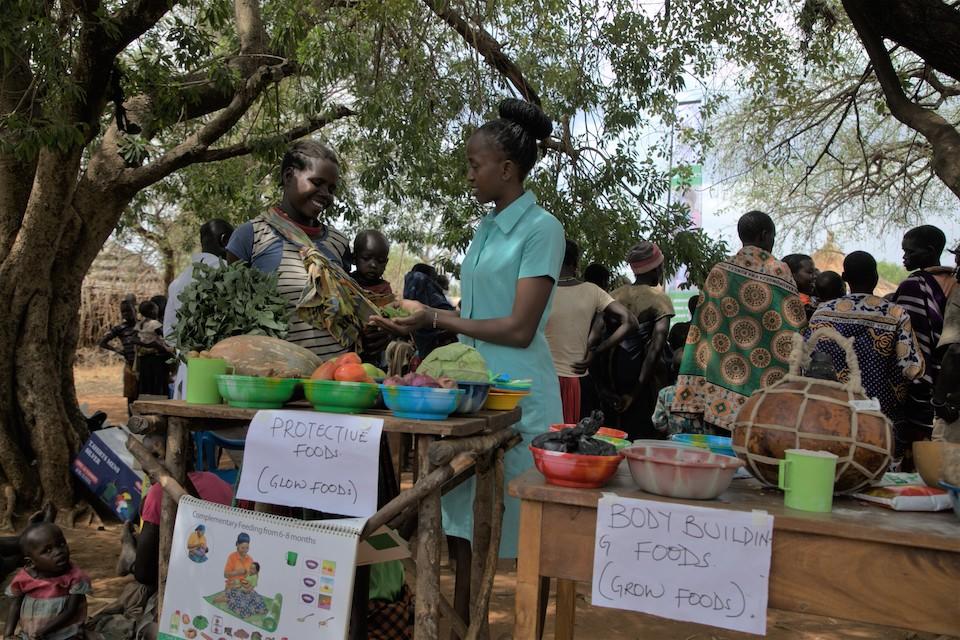
It's easy to understand why. For every child, nutrition is the bedrock of healthy development. Good nutrition is necessary for a child to learn and grow and reach their full potential.
And when a child is undernourished, it puts them at significantly higher risk of death from preventable, treatable causes — conditions like cholera or a respiratory virus. Being malnourished increases the frequency and severity of common infections and delays recovery. Nearly half of all deaths in children under age 5 are attributable to undernutrition. This is why UNICEF works so hard with partners all around the world to prevent malnutrition in the first place.
I was able to see firsthand the importance of taking a community-based approach to nutrition support — starting with mothers and caregivers — during a recent program visit to Uganda. Our group spent a few days in Karamoja, a sub-region in the northeast and one of the most socioeconomically disadvantaged areas of the country, where UNICEF interventions are making a real difference for children.
The sheroes of malnutrition prevention
Poor quality diets, services and practices are the main drivers of child malnutrition. Two-thirds of the world's children do not eat a diverse diet, including breastmilk, grains, beans, dairy, meat, eggs, fruits and vegetables, at 6 to 23 months old — a time when the quality of a child's diet is more important than at any other stage of life.
To address this, UNICEF helps develop and ensure delivery of a range of outreach services aimed at improving children's diets and nutritional status, in partnership with ministries of health, local organizations and community health systems.
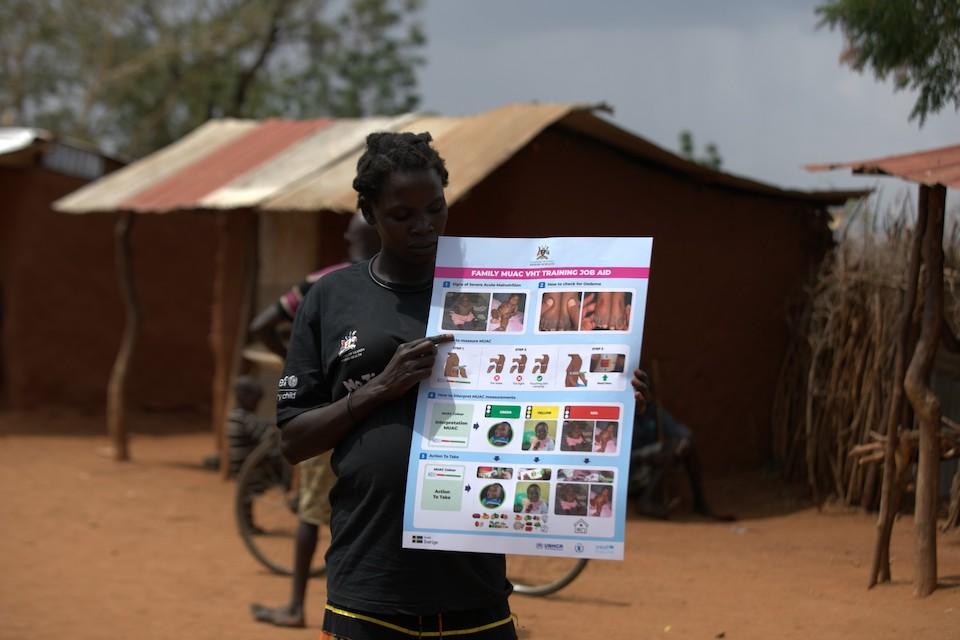
Many measures are community based, and community driven, and emphasize family education, training and resources.Following this approach, UNICEF works with local partners to encourage and equip mothers and caregivers, with support from community volunteers — often mothers themselves — to play a leading role in ensuring proper nutrition for children.
That means being the first line of defense, by being aware of best infant and young child feeding practices, by knowing how to screen children for malnutrition and by being familiar with the warning signs and what they mean, so a child can be referred for treatment quickly if needed.
Simple, low-cost innovations help support child nutrition
While in Karamoja, I attended a cooking demonstration in Iriiri subcounty. Led by a UNICEF-trained health worker, the demo was a lesson in how to prepare a nutritious meal using items available in local markets.
Dozens of local moms turned up with their youngsters for the session, held outside under shade trees near the village center. Nearby, other services were being offered, including nutrition screenings using bands to measure upper-arm circumference and photos showing how to recognize signs of malnutrition.
Specially designed spoons and bowls — two of UNICEF's simple, low-cost innovations to help reinforce nutrition guidance given — were provided.
The visit showed the power of prevention actions to keep children healthy, especially when led by trusted community members.
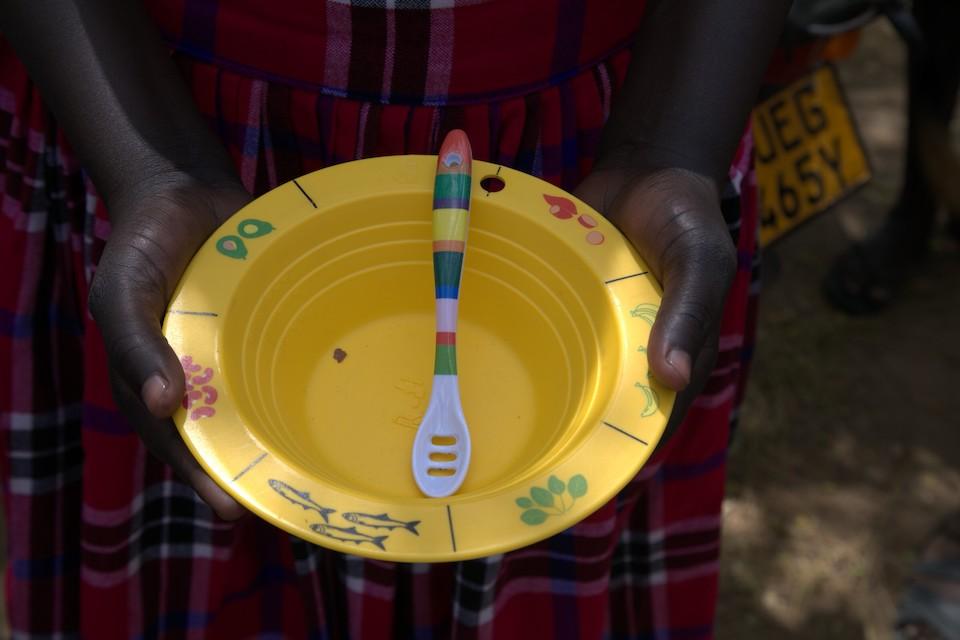
Being in Uganda, seeing Karamoja community members coming together and working as a team to learn and support better nutrition for children, was a powerful reminder that building stronger, more resilient systems that kids need to survive and thrive must be done from the ground up — only through community action is a solution sustainable.
UNICEF cannot do this work without support from partners like The Church of Jesus Christ of Latter-day Saints, a major contributor to UNICEF's nutrition programs and No Time to Waste campaign.
Other organizations supporting UNICEF's global nutrition programs include the Bill and Melinda Gates Foundation, the Children’s Investment Fund and the Eleanor Crook Foundation.
UNICEF works with partners in over 190 countries and territories to create a more equitable world where every child can be healthy, educated, protected and respected. Support UNICEF's mission with an unrestricted tax-deductible contribution today. Please donate.
